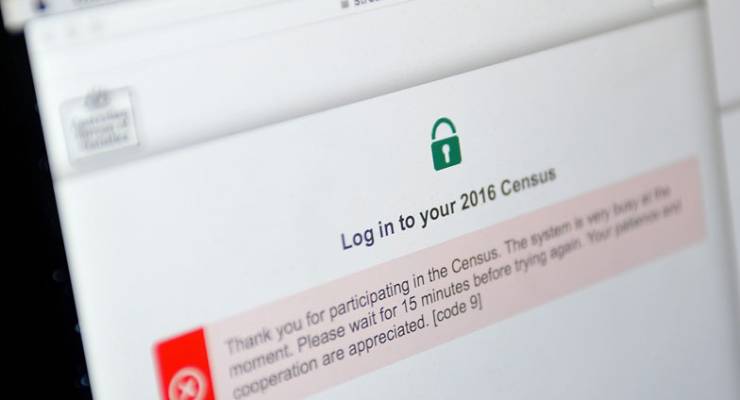
The Australian Bureau of Statistics wanted a response rate of 93.3% for the 2016 census, according to The Mandarin, “to be sure that the information is of sufficient quality”. I am at a loss to see how 93.3% of households filling in a census form, or any other rate for that matter, can assure that information is of sufficient quality.
For example, it could be possible that every one of the 93.3% of houses filling in the census form has omitted one person from its list of residents. Assuming on average there are three people per household, that would mean that 33% of the people in Australia were omitted from the census. Or if every third household left out a person, then 11% of the people would have been missed. (I didn’t take into account the people in the missing 6.7% of households, so the percentage of missing people is slightly different to what I have claimed.)
[Panicked ABS top dogs declare census return ‘crisis’]
Similarly, let’s say in an act of deliberate civil disobedience every respondent deliberately gave an incorrect answer to one census questions. Can you imagine what that would do the quality of the census? I can’t either, but I have little doubt that it would reduce its quality significantly.
The real problem the ABS has is that it has no way of making estimates of quality. I say this because, as I understand matters, no testing of note was undertaken before the census being undertaken, which might be able to throw a little light on this issue. Further, the Post Enumeration Survey is just a check on coverage, as there is no attempt being made to measure how well Australians answered the census questions.
[The census cannot force you to give your name]
Similarly, there has been no discussion of whether or not the answers provided on a paper form are different to the answers provided online. I don’t know what the differences might be, but I would bet there are differences which might possibly be large. How does this impact on quality? Is it the same across the whole population or is it focused into particular areas or sectors of society?
We do know the ABS has announced that a panel of “independent experts” has been asked to examine this issue and report on the quality issue early next year. How this panel will be able to come to any credible conclusions is a mystery to me, as there is no believable evidence available. I only hope that this panel of independent experts comes up with conclusions much closer to the truth than did the one that investigated the obviously dodgy Monthly Labour Force Statistics. It gave the MLFS a “clean bill of health”, but all serious users of labour data don’t give the MLF data much credence these days.
* This article was originally published at The Mandarin







Some clarification needed please: this article states the ABS ‘wanted a response rate of 93.3%…’. Has it actually received that response rate or is this piece hypothetical?
Twaddle – not worth publishing. The ‘what if?’ musings in para 2 short-circuited any effort at rational discourse. ‘What if’?’ everyone who filled in the census lied their asses off? There’s any multitude of ‘what if’s’ – why bother asking anyone anything?!
Exactly, Kerf. BK’s contribution yesterday was largely a list of figures from a survey. What if they were all false? Only the census seems to bother him.
Mate of mine in a shared house never did complete either paper or online form, and census have never been back. How many shared houses shared this experience?